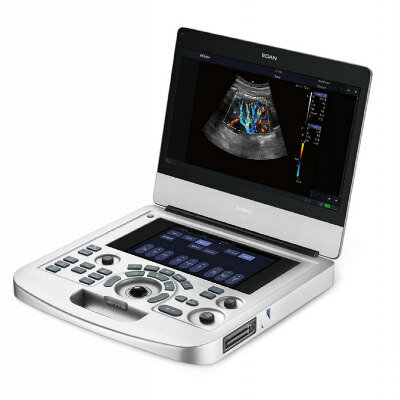OCT Intravascular Imaging Improves Stenting Procedure Outcomes
|
By MedImaging International staff writers Posted on 04 Sep 2023 |

Individuals diagnosed with coronary artery disease—a condition marked by the buildup of plaque within arteries leading to chest pain, shortness of breath, and heart attacks—often undergo percutaneous coronary intervention (PCI). This non-surgical procedure involves interventional cardiologists employing a catheter to position stents within blocked coronary arteries, thereby restoring blood flow. The most prevalent guidance method for PCI is angiography, which employs X-rays and a specialized dye (contrast material) to visualize blood flow through heart arteries and highlight any blockages. However, angiography has its limitations. It struggles to accurately determine artery size and plaque composition, and is suboptimal in identifying issues like stent expansion post-PCI and other complications that impact the procedure's effectiveness and safety. Intravascular ultrasound (IVUS) is an alternative technique offering a more precise and specific view of coronary arteries. Although studies confirm that IVUS-guided PCI surpasses angiography-guided PCI, leading to reduced cardiovascular events, its usage remains limited due to challenges in image interpretation.
A more recent technique is optical coherence tomography (OCT), which employs light, rather than sound, to create images of blockages. OCT images exhibit superior resolution, accuracy, and detail compared to IVUS, with easier interpretability. Despite these advantages, OCT is only applied in 3% of PCI cases, partially due to limited study data. The aim of this new trial is to alter this landscape. Now, a new study has found that using OCT to guide stent implantation during PCI can enhance safety and yield better outcomes for heart disease patients than relying solely on angiography. These findings are from the ILUMIEN IV: OPTIMAL PCI study which is the largest clinical trial of its kind comparing the two methods for this procedure.
The ILUMIEN IV: OPTIMAL PCI trial randomized 2,487 patients to OCT-guided PCI using a device manufactured by Abbott (Abbott Park, IL, USA) and angiography-guided PCI. The trial was conducted between May 2018 and December 2020 across 80 centers in 18 countries, with patients unaware of their assigned guided procedure. Researchers assessed post-PCI dimensions of the stented area since stent re-narrowing over time can necessitate repeat revascularization procedures. Notably, the OCT group displayed a significantly larger stent area immediately after the procedure compared to the angiography-guided group—a .36mm2 increase. OCT guidance also correlated with fewer procedural complications compared to angiography guidance.
Additionally, the study examined target lesion failure (TLF), a combination of cardiac death, target-vessel myocardial infarction, or ischemia-driven target-vessel revascularization. Two years post-procedure, 88 patients in the OCT group experienced TLF, in contrast to 99 patients in the angiography group. Although this difference did not reach statistical significance, the study delved further into stent thrombosis rates, a severe PCI complication. Within two years of PCI, six patients in the OCT group experienced stent thrombosis, while 17 patients in the angiography group encountered this issue—showing OCT's 65% reduction in such instances. Importantly, 96% of patients experiencing stent thrombosis in the trial subsequently faced death or myocardial infarction, highlighting the importance of preventing such events.
“The ILUMIEN IV trial demonstrated that OCT-guided PCI compared with angiography-guided PCI improves stent implantation results and the safety of the procedure, with less stent thrombosis, the most devastating complication of stenting,” said senior author Gregg W. Stone, MD. “However, while there were numerically fewer cardiac deaths and myocardial infarctions (MIs) in the OCT group, the differences between groups in the primary composite outcome of cardiac death or MIs or repeat revascularization related to the treated vessel was not significant.”
Related Links:
Abbott
Latest Radiography News
- Novel Breast Imaging System Proves As Effective As Mammography
- AI Assistance Improves Breast-Cancer Screening by Reducing False Positives
- AI Could Boost Clinical Adoption of Chest DDR
- 3D Mammography Almost Halves Breast Cancer Incidence between Two Screening Tests
- AI Model Predicts 5-Year Breast Cancer Risk from Mammograms
- Deep Learning Framework Detects Fractures in X-Ray Images With 99% Accuracy
- Direct AI-Based Medical X-Ray Imaging System a Paradigm-Shift from Conventional DR and CT
- Chest X-Ray AI Solution Automatically Identifies, Categorizes and Highlights Suspicious Areas
- AI Diagnoses Wrist Fractures As Well As Radiologists
- Annual Mammography Beginning At 40 Cuts Breast Cancer Mortality By 42%
- 3D Human GPS Powered By Light Paves Way for Radiation-Free Minimally-Invasive Surgery
- Novel AI Technology to Revolutionize Cancer Detection in Dense Breasts
- AI Solution Provides Radiologists with 'Second Pair' Of Eyes to Detect Breast Cancers
- AI Helps General Radiologists Achieve Specialist-Level Performance in Interpreting Mammograms
- Novel Imaging Technique Could Transform Breast Cancer Detection
- Computer Program Combines AI and Heat-Imaging Technology for Early Breast Cancer Detection
Channels
MRI
view channel
PET/MRI Improves Diagnostic Accuracy for Prostate Cancer Patients
The Prostate Imaging Reporting and Data System (PI-RADS) is a five-point scale to assess potential prostate cancer in MR images. PI-RADS category 3 which offers an unclear suggestion of clinically significant... Read more
Next Generation MR-Guided Focused Ultrasound Ushers In Future of Incisionless Neurosurgery
Essential tremor, often called familial, idiopathic, or benign tremor, leads to uncontrollable shaking that significantly affects a person’s life. When traditional medications do not alleviate symptoms,... Read more
Two-Part MRI Scan Detects Prostate Cancer More Quickly without Compromising Diagnostic Quality
Prostate cancer ranks as the most prevalent cancer among men. Over the last decade, the introduction of MRI scans has significantly transformed the diagnosis process, marking the most substantial advancement... Read moreUltrasound
view channel
Deep Learning Advances Super-Resolution Ultrasound Imaging
Ultrasound localization microscopy (ULM) is an advanced imaging technique that offers high-resolution visualization of microvascular structures. It employs microbubbles, FDA-approved contrast agents, injected... Read more
Novel Ultrasound-Launched Targeted Nanoparticle Eliminates Biofilm and Bacterial Infection
Biofilms, formed by bacteria aggregating into dense communities for protection against harsh environmental conditions, are a significant contributor to various infectious diseases. Biofilms frequently... Read moreNuclear Medicine
view channel
New SPECT/CT Technique Could Change Imaging Practices and Increase Patient Access
The development of lead-212 (212Pb)-PSMA–based targeted alpha therapy (TAT) is garnering significant interest in treating patients with metastatic castration-resistant prostate cancer. The imaging of 212Pb,... Read moreNew Radiotheranostic System Detects and Treats Ovarian Cancer Noninvasively
Ovarian cancer is the most lethal gynecological cancer, with less than a 30% five-year survival rate for those diagnosed in late stages. Despite surgery and platinum-based chemotherapy being the standard... Read more
AI System Automatically and Reliably Detects Cardiac Amyloidosis Using Scintigraphy Imaging
Cardiac amyloidosis, a condition characterized by the buildup of abnormal protein deposits (amyloids) in the heart muscle, severely affects heart function and can lead to heart failure or death without... Read moreGeneral/Advanced Imaging
view channel
New AI Method Captures Uncertainty in Medical Images
In the field of biomedicine, segmentation is the process of annotating pixels from an important structure in medical images, such as organs or cells. Artificial Intelligence (AI) models are utilized to... Read more.jpg)
CT Coronary Angiography Reduces Need for Invasive Tests to Diagnose Coronary Artery Disease
Coronary artery disease (CAD), one of the leading causes of death worldwide, involves the narrowing of coronary arteries due to atherosclerosis, resulting in insufficient blood flow to the heart muscle.... Read more
Novel Blood Test Could Reduce Need for PET Imaging of Patients with Alzheimer’s
Alzheimer's disease (AD), a condition marked by cognitive decline and the presence of beta-amyloid (Aβ) plaques and neurofibrillary tangles in the brain, poses diagnostic challenges. Amyloid positron emission... Read more.jpg)
CT-Based Deep Learning Algorithm Accurately Differentiates Benign From Malignant Vertebral Fractures
The rise in the aging population is expected to result in a corresponding increase in the prevalence of vertebral fractures which can cause back pain or neurologic compromise, leading to impaired function... Read moreImaging IT
view channel
New Google Cloud Medical Imaging Suite Makes Imaging Healthcare Data More Accessible
Medical imaging is a critical tool used to diagnose patients, and there are billions of medical images scanned globally each year. Imaging data accounts for about 90% of all healthcare data1 and, until... Read more
Global AI in Medical Diagnostics Market to Be Driven by Demand for Image Recognition in Radiology
The global artificial intelligence (AI) in medical diagnostics market is expanding with early disease detection being one of its key applications and image recognition becoming a compelling consumer proposition... Read moreIndustry News
view channel
Bayer and Google Partner on New AI Product for Radiologists
Medical imaging data comprises around 90% of all healthcare data, and it is a highly complex and rich clinical data modality and serves as a vital tool for diagnosing patients. Each year, billions of medical... Read more



















